Reflections on conducting a Science Communication Workshop at BLiSC
The Communications Office of the Bangalore Life Sciences Cluster organised a workshop titled “The Craft of Science Communication” for its campus members in May this year– the first of its kind designed and executed entirely in-house.
The workshop, comprising five distinct modules spread over five days, aimed to apprise the participants of various aspects of science communication. The first module was an introduction to science communication, followed by sessions on storytelling, written communication, visual communication, and verbal communication. Each module had its own instructor, and the workshop saw a total of 65 registrations, with an average turnout of 20 people per module.
Here is a brief overview of the topics and activities covered during each of the five modules:
Day 1: Introduction to Science Communication by Anusha Krishnan (Freelance Science Writer)
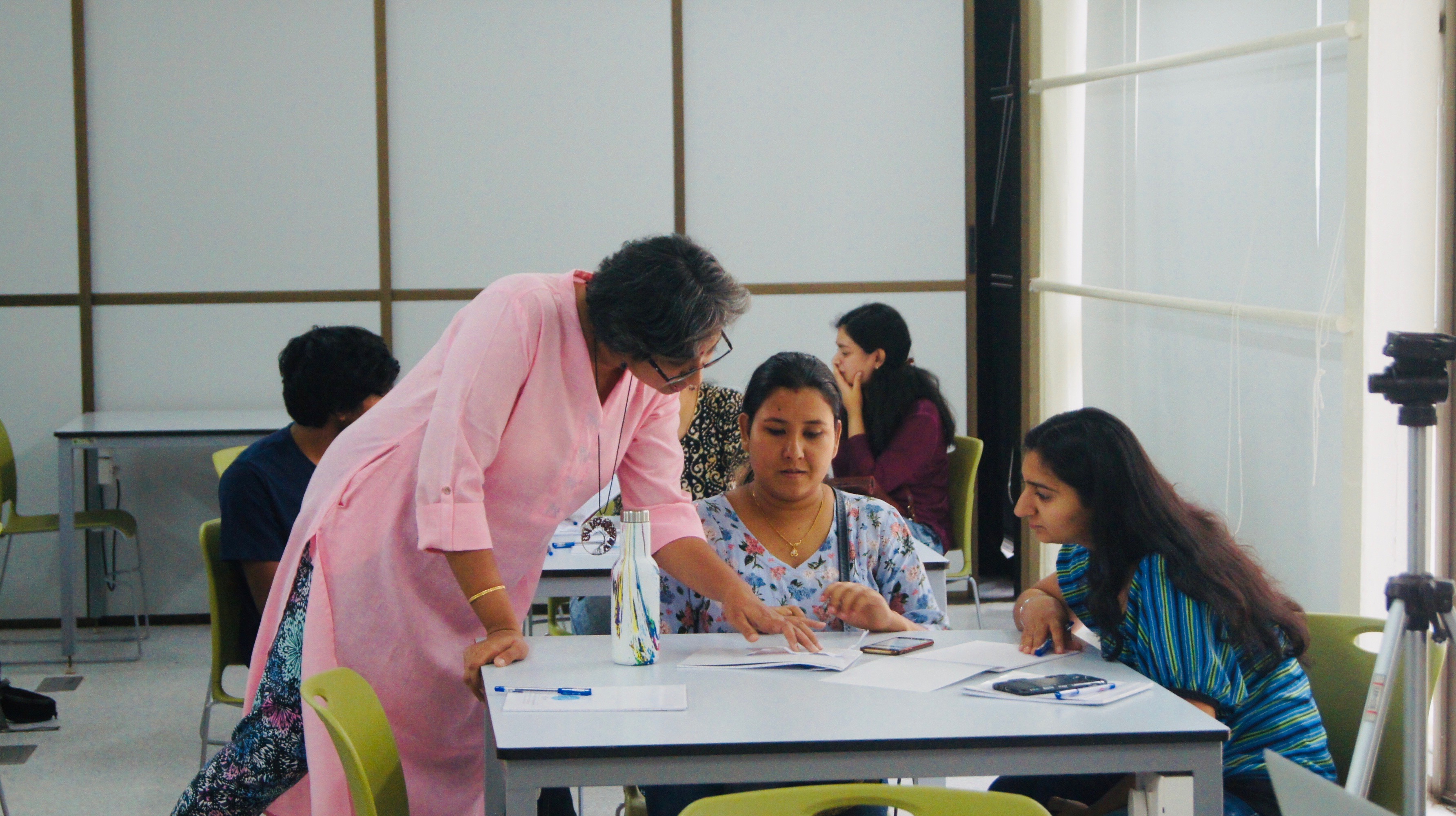
Anusha providing feedback to some of the participants on writing jargon-free titles
The first day of the workshop provided a broad overview of science communication beginning with the importance of considering the audience while communicating science and then moved on to discuss the pros and cons of using different platforms and media formats for science communication.
The importance of, “losing the jargon” in science communication was delivered through a short exercise on simplifying jargon-heavy titles of research papers into more accessible versions for lay audiences. The instructor for this module, Anusha felt that the exercise “was really useful in drawing out questions and doubts, and ensuring full engagement during the rest of the workshop.”
After a brief look into the inadvisability of using click-baits to garner attention, the session wound to a close with a spirited look into examples of good and bad practices in science communication.
Speaking about her experience, Anusha felt happy that she came a full circle while delivering this module, as she “had to relearn how to connect with an audience” during her module. “It's an essential part of any form of communication, and it's been so long since I had to chance to speak in public, that I was a bit rusty with this,” she explained.
Day 2: Narratives and Storytelling in Science by Siddharth Kankaria (Science Communication & Outreach Manager at Simons-NCBS)
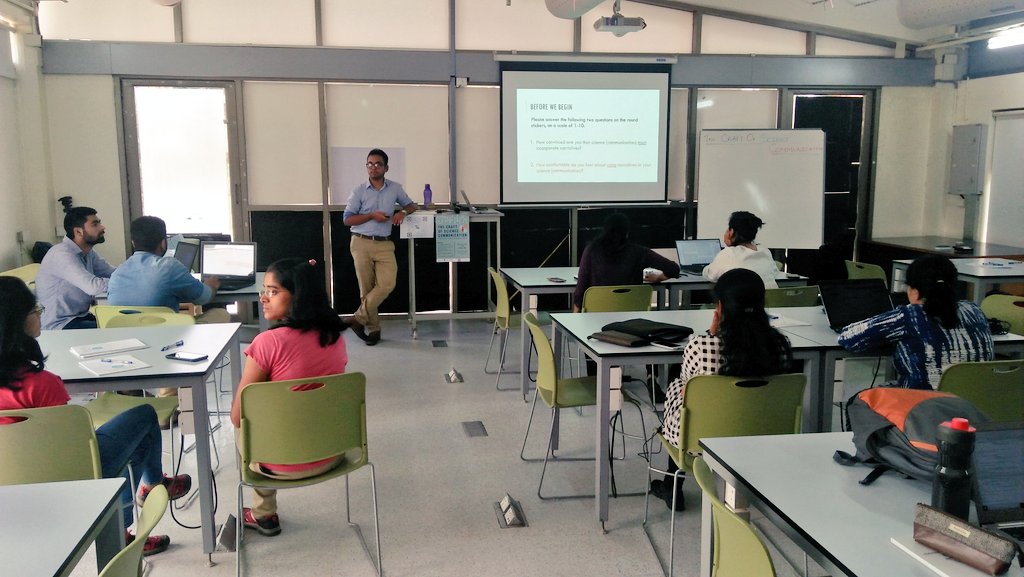
Siddharth listening to a question from one of the participants about using narrative arcs
The second day of the workshop aimed at demonstrating the importance of using narratives in science communication, and introduced useful tools for improving storytelling.
The session discussed why stories form an inevitable part of how we communicate (and interpret) information—along with concepts like narrative structure and spectrum—and used several examples and models of narrative arcs used in popular culture.
Siddharth, the instructor for this module felt that, “stories are an integral part of how humans process information, and it is imperative that scientists are able to use narratives and the emotions evoked by them, to meaningfully engage their audiences with science.”
The module used improvisational games and storytelling activities to demonstrate how narratives can be used in science communication. The session also touched on some ethical considerations and practical challenges of using narratives in science, and how these can be overcome.
Speaking on his experience of conducting this module, Siddharth felt that, “the participants were able to appreciate the importance of connecting the three ‘C’s of effective science communication - providing an appropriate 'context' to their scientific 'content', in order to generate a desirable 'connect' with their audience.”
Day 3: Written Communication by Shreya Ghosh (Program Manager – Science Communication at IndiaBioscience)
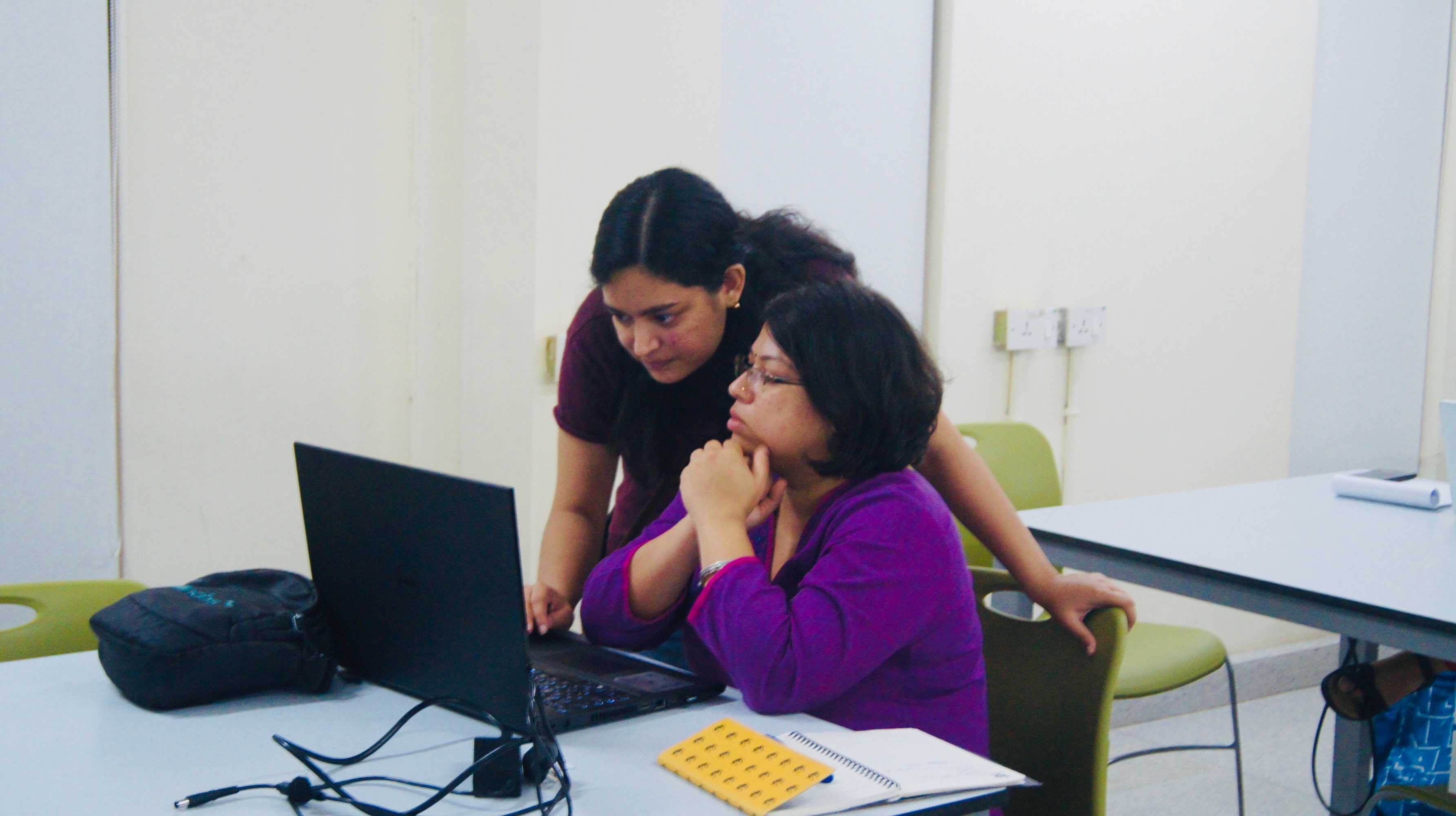
Shreya providing individual feedback to a participant on her writing exercise
The third day of the workshop exposed participants to various forms of written scientific communication. The module was designed to orient scientists to write more coherently and be more engaging through their language.
Shreya, the instructor for this module felt, “it is more important now than ever before for scientists to learn how to communicate their science simply, accurately, and effectively to both technical and non-technical audiences.”
Through a mix of lecture slides and short writing exercises, the session addressed various aspects of how to improve writing, covering topics like overcoming the fear of the blank page, simplifying scientific jargon, and the power of self-editing.
It also reiterated parts of the previous modules with topics such as understanding your audience and using narrative structures to streamline one’s writing outputs. Lastly, the module used writing exercises with built-in peer-feedback to help participants improve their writing in real time.
Speaking about her experience, Shreya felt that, “the audience was really responsive and participated whole-heartedly in the interactive exercises”. She also felt that “a common issue faced by many scientist-turned-writers is to learn how to maintain accuracy at the same time as eliminating jargon, and I feel we were able to take a few steps in the right direction.”
Day 4: Visual Communication by Anoopa John (Freelance Designer & Visual Artist)
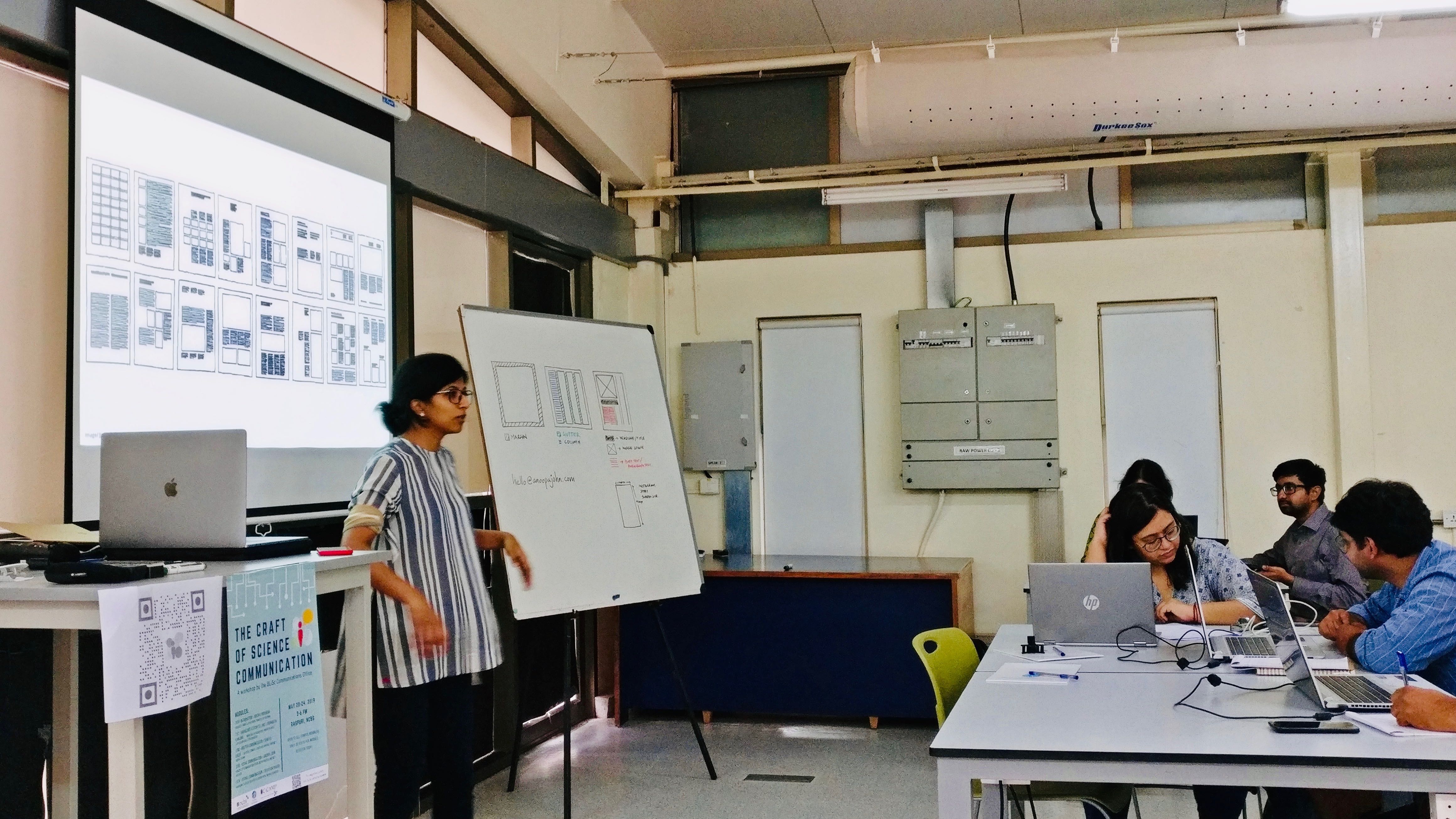
Anoopa discussing the importance of grids and layouts during her module
The target of the fourth day of the workshop was to acquaint participants with the various principles of communication design. The module demonstrated the advantages of structuring data and narratives, through the process of design.
Anoopa, the instructor for this module explained that, “since it was a short workshop, I felt it was best to touch up a few basic aspects that the participants can then later look into in greater detail, during their free time. This was meant to serve as a starting point.”
The session provided several examples of best practices in communication design from other fields, and exposed participants to the specific considerations required for designing effective infographics, posters, and presentation slides.
As a practical exercise, all participants were asked to design a poster during the workshop, and received advice and feedback from the instructor and peers on their efforts.
Reflecting on her experience, Anoopa felt that, “on the whole, it was a great experience for me. All participants were really enthusiastic, and I truly appreciate all the effort and thinking that went into the exercises that they were asked to do.”
Day 5: Verbal Communication by Devayani Khare (Science Communication & Outreach Manager at NCBS)
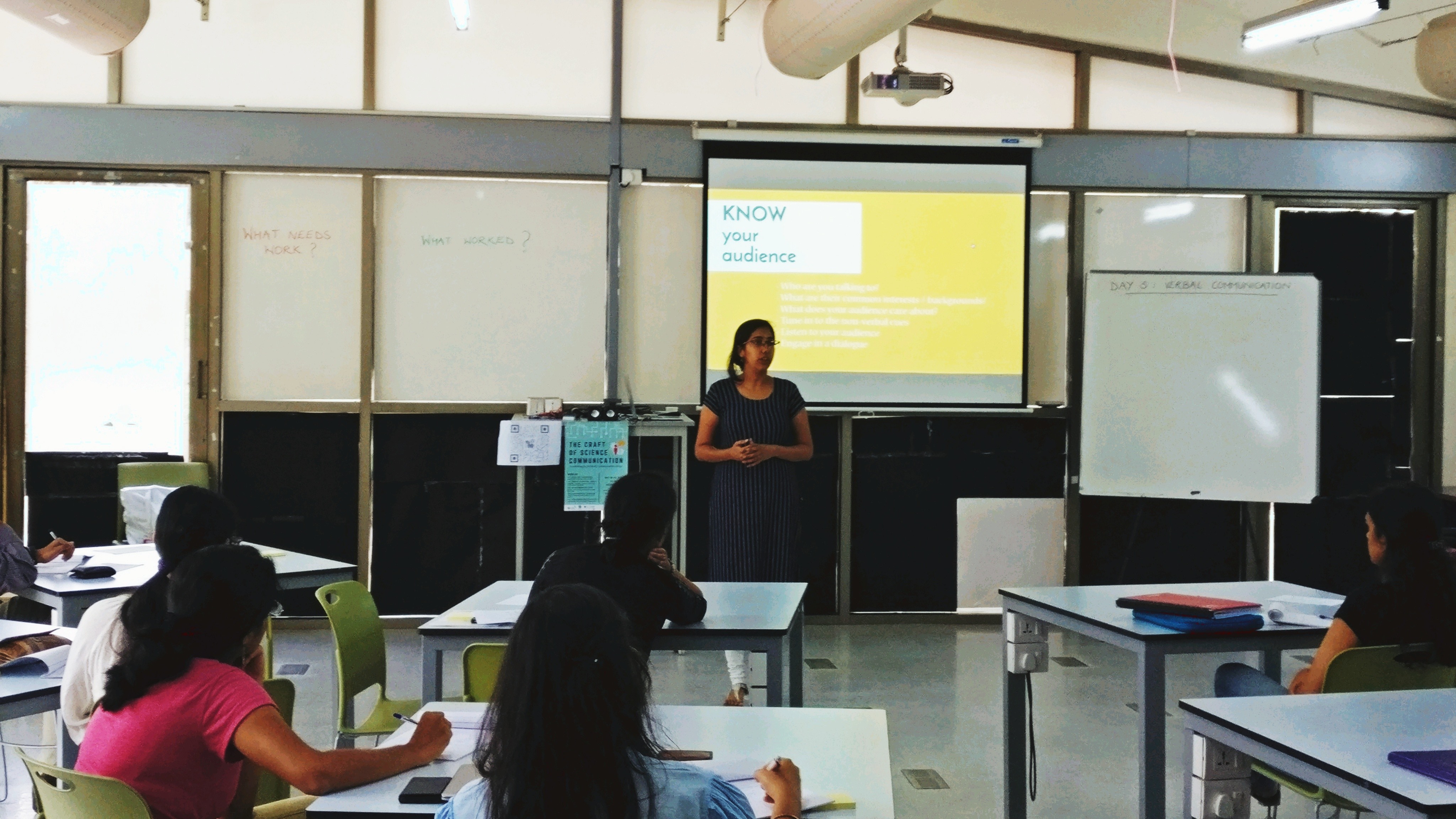
Devayani reiterating the importance of knowing your audience during any presentation
The fifth and final day of the workshop focussed on the various verbal and non-verbal aspects of communicating science, plus building confidence in delivering oral presentations better.
Devayani, the instructor for this module stressed, “verbal communication is often an undervalued component of science communication - dealing with one's demons, building confidence in delivery, reading the audience, and being flexible enough to fine-tune content is a key skill to master.“
The module discussed aspects like improving articulation, enhancing clarity of concepts, and using better body language. It also employed a series of improvisational activities to discuss various best practices in verbal communication. Participants were then asked to deliver a two-minute elevator pitch to introduce their area of research in a confident and engaging manner, using what they had learnt during this module to speak effectively.
Reflecting on her experience, Devayani felt, “giving people the forum for more improvisation and extempore is a great way to build confidence. The workshop was a starting point, it hopefully encouraged participants to seek other avenues to hone their public speaking skills.”

Snapshot of participant outputs during some of the workshop activities
Overall, the workshop received positive feedback.
Many participants appreciated the design and structure of the workshop. One of them liked that, “there were exercises after each topic to familiarise ourselves with that concept and bring it into practice. I also liked that our assignments were checked, and we were provided feedback on it”.
The concepts covered during the workshop were also well received by the participants. One of them felt that, “going through the beginning of how to write a science story was really nice”, while another, “liked the analogies between storytelling and how science can be told.”
Participants also valued the new skills they learnt during the workshop. One of them felt they were better equipped to, “create effective layouts for posters and PowerPoint presentations, using appropriate fonts and colours”, while another liked the “spontaneous writing sessions, tips on how to write leads, and the structure of writing popular science articles.”
Engaging discussions, constructive criticism, and a dynamic two-way learning experience for instructors and participants made this workshop a strongly interactive exercise.
Buoyed by the success of the workshop, the BLiSC Communications Office, looks forward to organising more workshops in the future, and cover more specific aspects of communicating science better. We are also looking at ways to collaborate and engage with more institutions, stakeholders, and practitioners of science communication to better shape science communication in India and further our capacity-building efforts.
Eventually, we really hope to see people engage with the public in more compelling, creative, and confident ways, while making science more accessible and equitable for different audiences.
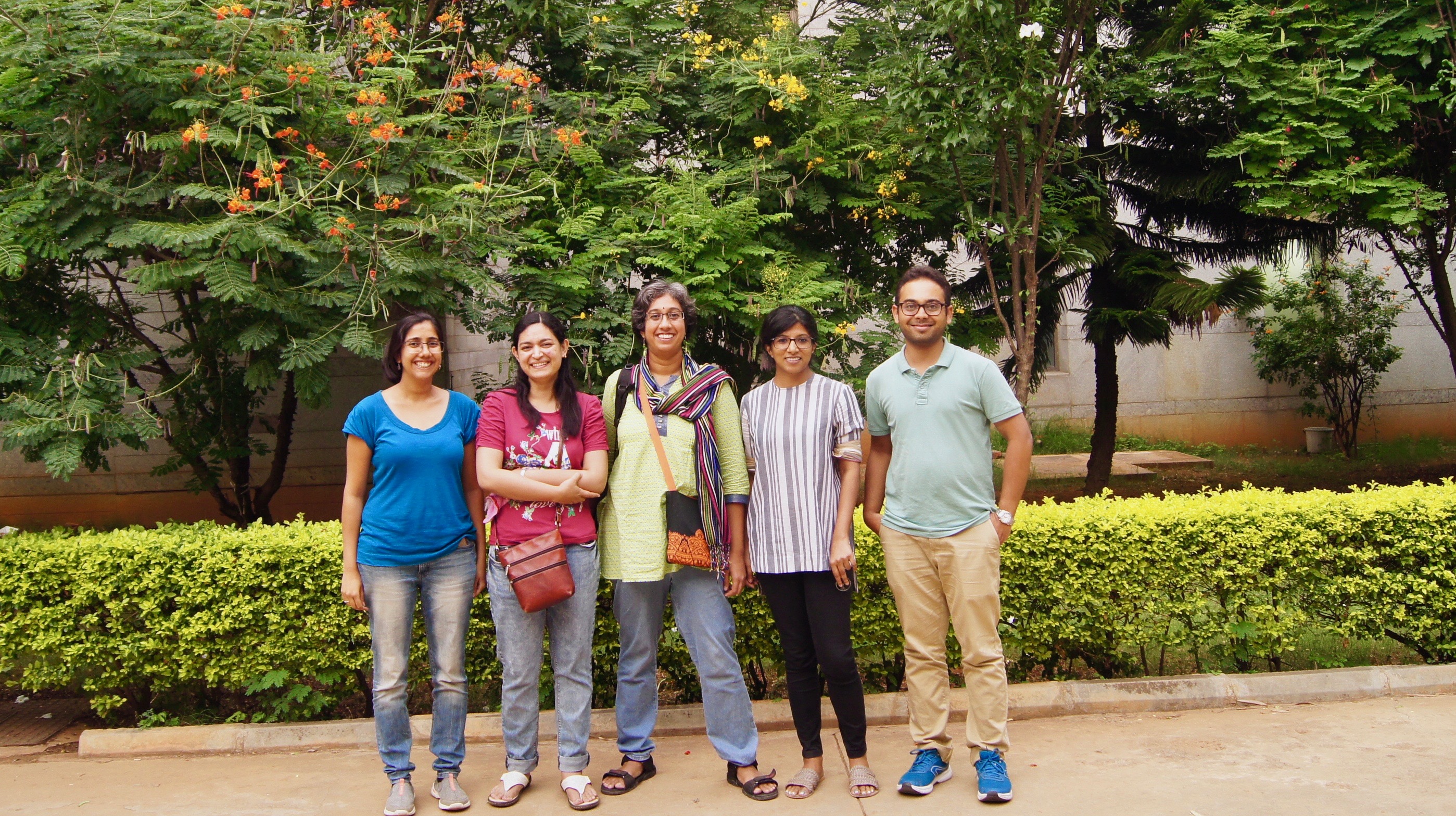
Ecstatic instructors at the end of the workshop (L to R): Devayani, Shreya, Anusha, Anoopa, Siddharth








0 Comments